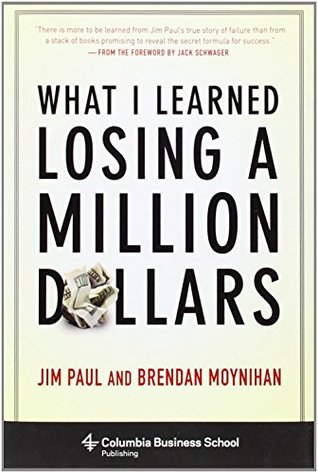More on this book
Community
Kindle Notes & Highlights
One of the oldest rules of trading is: If a market is hit with very bullish news and instead of going up, the market goes down, get out if you’re long. An unexpected and opposite reaction means there is something seriously wrong with the position.
(Richard Dennis, dubbed the “Prince of the Pit,” borrowed $1,600 from his family in 1970, bought a seat at the minor-league Mid-America Commodity Exchange for $1,200, and ran the remaining $400 into a reported $200,000,000 over the next fifteen years.)
How was I going to tell her that my fifteen-year career and all of the money had evaporated in the last two and a half months?
Former Citicorp CEO Walter Wriston said that a lender who doesn’t have loan losses isn’t doing his job.
I couldn’t believe it. Here was Joe Siegel, easily trading more lumber futures than anyone else on the floor, and he didn’t even know the difference between green and kiln-dried lumber in the cash market.
people make purchases for only one of two reasons: to feel better (satisfying a want) or to solve a problem (satisfying a need).
When dealing with the risk of the uncertainty of the future, you have three choices: engineering, gambling, or speculating.
Ninety percent of the time an “investment” is a “trade” that didn’t work.
how about IBM, the darling of institutional and individual investors alike? Its stock went from $175 in 1987 to $45 in 1993 with buy recommendations from analysts all the way down.
Remember, participating in the markets is about making decisions, and as Drucker reminds us, “There is no perfect decision. One always has to pay a price which might mean passing up an opportunity.”
you can’t calculate the probability of a trade’s being profitable; you can only calculate your exposure. So all you can do is manage your losses, not predict profits.
This doesn’t mean you’re predicting the future. It means you know ahead of time what alternative courses of action you will take if event A, B, or C happens.


